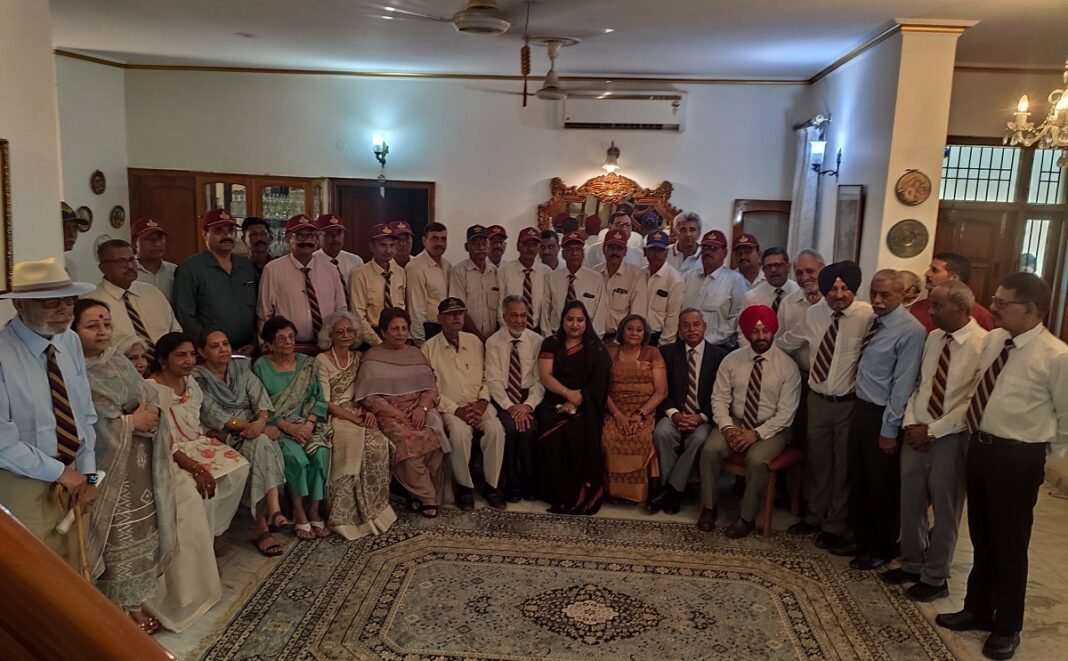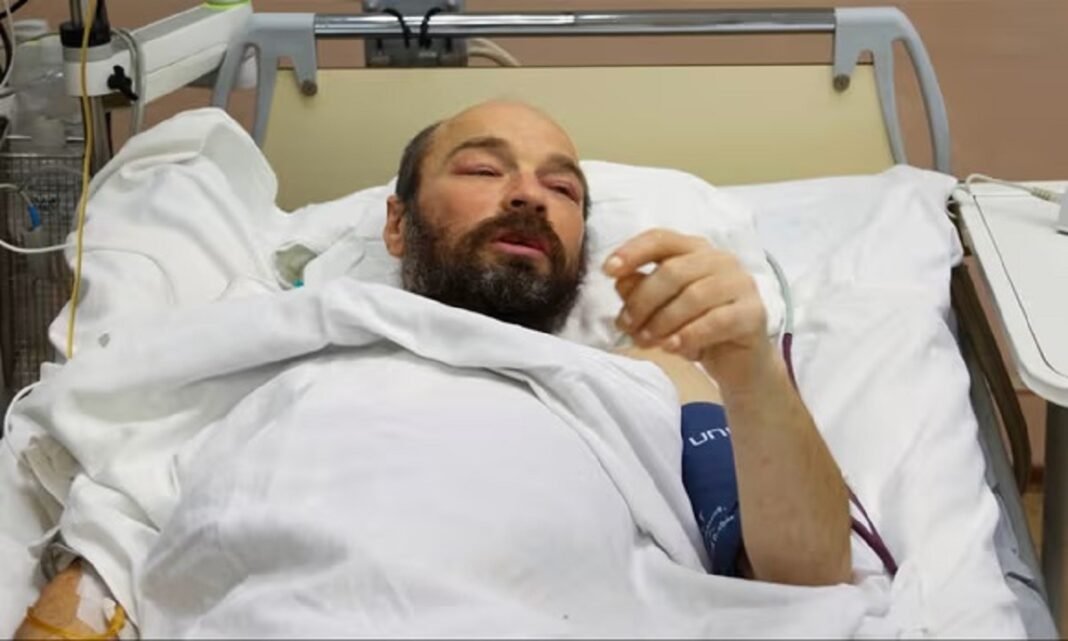They had several stories of bravery, valour, sacrifice and camaraderie to relate as a few dozen veterans of the highly decorated 4th Battalion of the Rajput Regiment, one of the oldest Indian infantry regiments, from different parts of the country gathered in Mohali on Friday at the initiative of host Col (retd) Ranbir Singh, Vir Chakra (VrC), and his wife Jasjit Kang.
The veterans, including ex-officers, junior commissioned officers (JCOs) and
non-commissioned officers (NCOs), some with their wives, are here for what is being described as a four-day gala get-together to commemorate the Zojila Battle Honour Day in advance of the annual celebrations on November 16 due to the battalion’s deployment in the field.
Apparently mighty pleased with the gathering at his residence in Sector 69 Mohali, Col Ranbir Singh, into his 84th year, shared with your own news portal LifeInChandigarh.com: “My wife and I were seized with a compelling desire to organize a gala gathering of 4 Rajput veterans of all ranks at Mohali. I’m happy to note that the response from my old comrades has been overwhelming, with some of them despite their advanced age making it possible to come all the way from Cochin, Bangalore and Jaipur.”
The spirit of camaraderie was all pervasive as veterans of the 4th Rajput Battalion, some accompanied by their spouses, reunited to fondly reminisce about their days of service in the challenging conditions of war and in peace. The battalion’s current Commanding Officer (CO) Col Sandeep Singh, Sena Medal (SM) was also present along with representation of unit JCOs and NCOs.
Some of the decorated veterans proudly related the valour and determination showed by the battalion especially in the lesser publicly known Kargil battle of May 1965 (not the famous Kargil war of 1999) in which platoon sized units raided and captured the highest feature (Point 16320) overlooking Kargil town and the Kashmir-Leh highway, which was illegally captured by Pakistan Army in 1947-48, after a bloody close quarter combat, in which the enemy held advantageous heights.
Advertisement

The raiding party suffered heavy casualties, including its Commanding Officer Major Baljit Singh Randhawa, who continued to direct his men despite being grievously injured in the chest. He was decorated with the Maha Vir Chakra (MVC) posthumously. The statue of Maj Randhawa at the feature stands testament to his bravery.
Col (retd) Ranbir Singh, then a Captain, was among the wounded along with Capt (retd) VK Agarwal, then a 2nd Lieutenant. Then Captain Ranbir Singh was awarded the Vir Chakra.
In the 1971 Eastern War (Bangladesh war), the battalion was tasked with neutralising a Pakistani artillery position at Chandipur, 10 kms behind enemy lines, which was proving a hurdle in the advance of Indian troops. The advancing Indian troops had to wade through the Giri river in the absence of a bridge.
As they moved along both sides of the road approaching the artillery gun position, the precise location of which was not known to the raiding party, they were taken completely by surprise as they came under heavy direct fire from the artillery gun (called ground roll direct fire) which is normally used as a long-range weapon with its shell following a parabolic trajectory.
Still the Indian troops kept bravely moving forward despite the heavy fire from the artillery gun, in conjunction with mortar and medium machine gun fire, inflicting casualties on them. Eventually the troops were ordered to withdraw but the mission was accomplished as the enemy sensing a threat of encirclement, completely withdrew from the area.
Col (retd) D S Rajput, Captain then, was grievously wounded and was awarded the Vir Chakra for bravery. Honorary Capt (retd) Ram Singh, 90, then Naib Subedar, earned the Sena Medal.
Major General (retd) MC Nanjappa was awarded the Mentioned-in-Dispatches for his valour in the 1971 Eastern War.
Later he went on to receive the Yudh Seva Medal (YSM) for his unit command during Indian Peacekeeping Force (IPKF) operations in Sri Lanka. He was awarded Ati Vishisht Seva Medal (AVSM) twice, once as Brigadier and later as Major General.
4 Rajput Battalion’s history
The unit boasts a rich legacy of valour and sacrifices of its forefathers. It is one of few units which participated in World Wars I, II. It took part in 22 overseas campaigns from 1845 to 1946, winning accolades while fighting battles in Persia, Aden, Macedonia, Tigris, Al-Alamein and Burma.
Post independence, the unit fought in 1948 J&K operations, 1965 and 1971 Indo- Pak wars, Gaza Strip 1960/61, Goa liberation 1961, Indo-China war 1962, IPKF Operations in Sri Lanka in 1988/90.
Called the “Fighting Fourth”, 4 Rajput Battalion swears by its motto, “Sarvatra Vijaya”.
Four generations of military service
Col (retd) Ranbir Singh has authored a book ‘Creed of Valour and Sacrifice’ documenting his family’s 120 years of four-generations service to the Indian Army.
The tryst of the Kang family with the Indian Army began when Risaldar Narain Singh, Col Ranbir Singh’s grandfather, joined the 6th Bengal Cavalry (now 18 Cavalry) as a ‘sowar’ in 1869.
Narain Singh’s son Brig Sukhdev Singh, Vir Chakra (VrC) in 1948 Zojila Pass operation in J&K, Military Cross (MC) in WWII, carried forward the second-generation banner. After this, Brig Sukhdev’s three sons – Capt Bharpur Singh Kang (later DIG), Col Jasbir Singh Kang and Col Ranbir Singh – served as third generation flag-bearers. Capt Bharpur Singh’s son Karminder Singh Kang, the fourth generation in the Indian Army, was killed in action in Sri Lanka in 1989.
The Kang family has the distinction of having fought in Northwest Frontier Province in 1897 and early 1940s, WWII in Burma against the Japanese from 1942-46, the 1947-48 war with Pakistan in J&K, 1965 and 1971 war with Pakistan and IPKF Operations in Sri Lanka.
The book is also a tribute to all those who have been serving the nation in uniform generation after generation.




